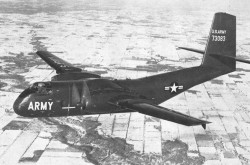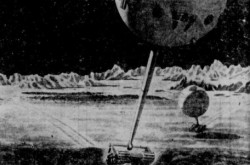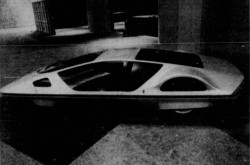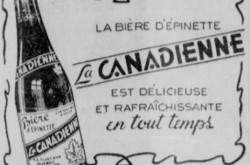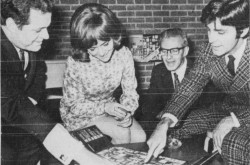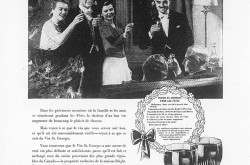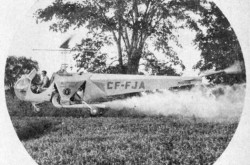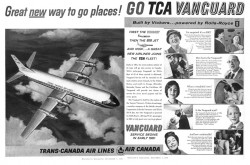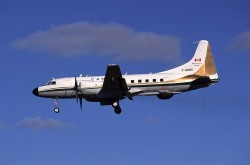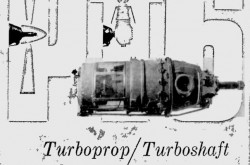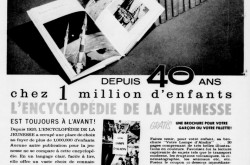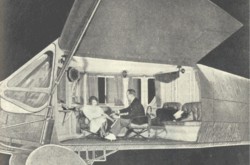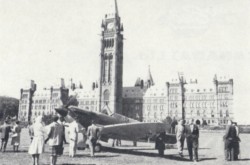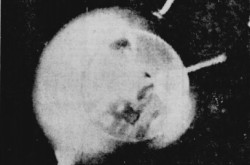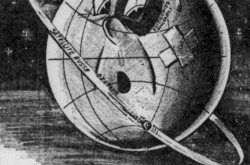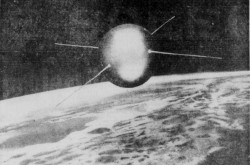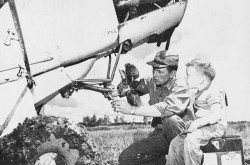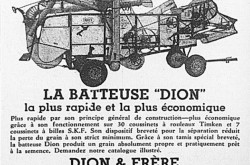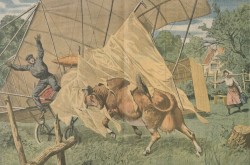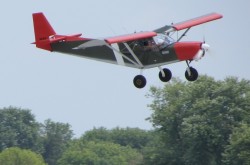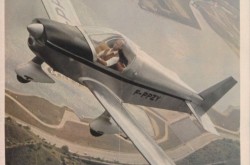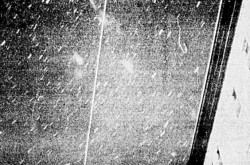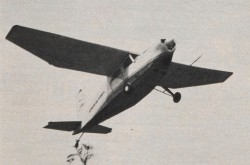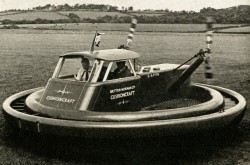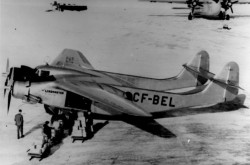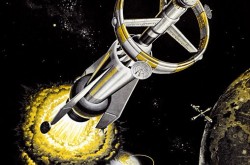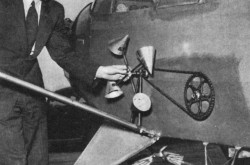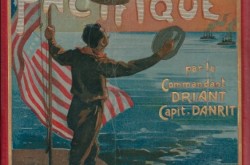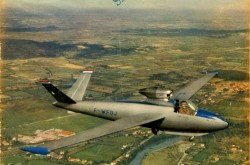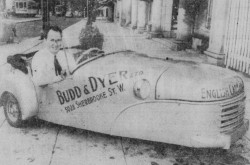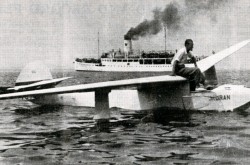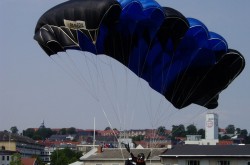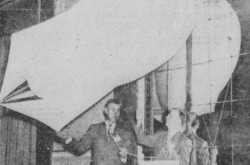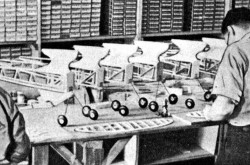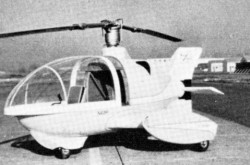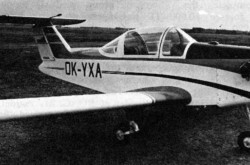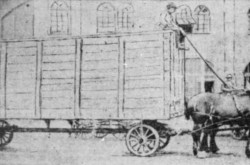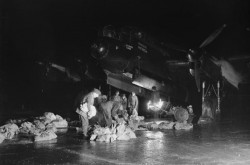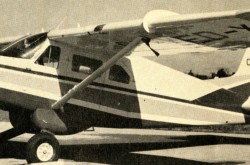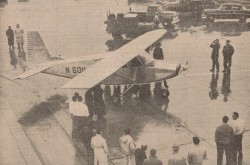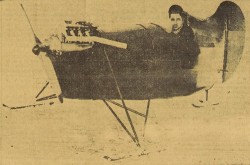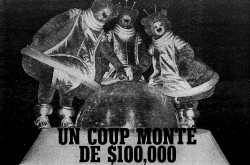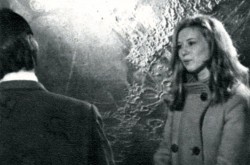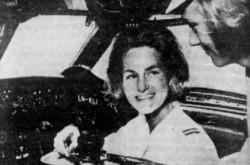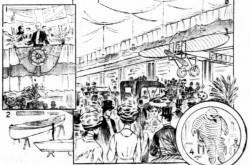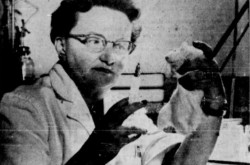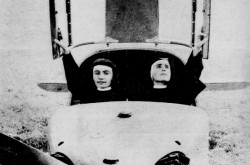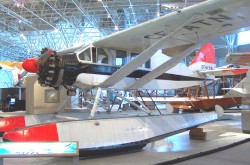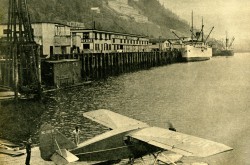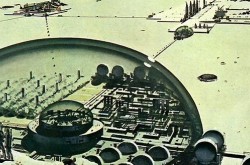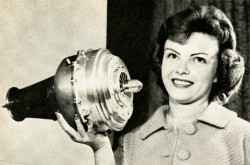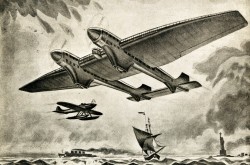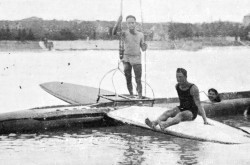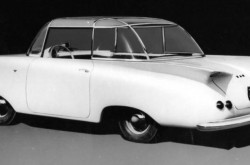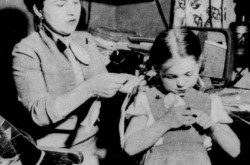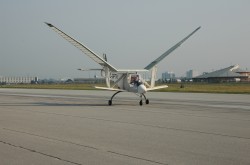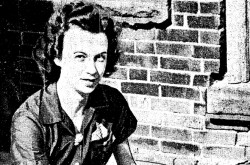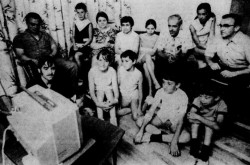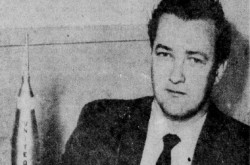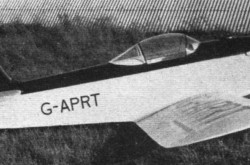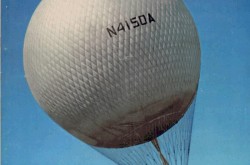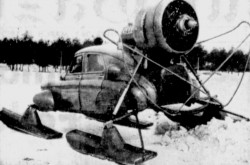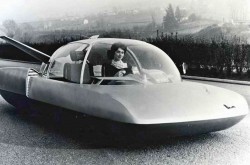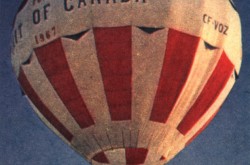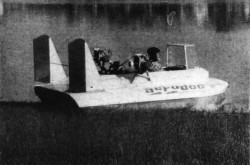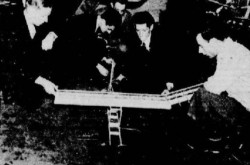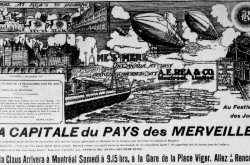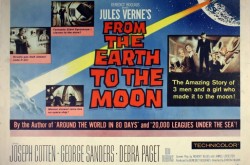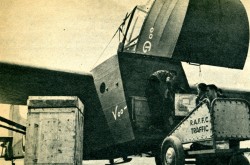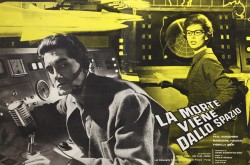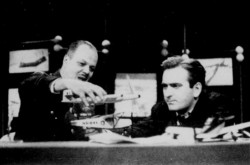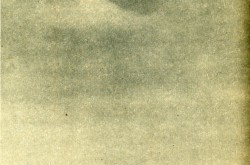Uchû Daisensô, or, A battle in outer space from the land of the rising Sun

Kon’nichiwa and hello, my diligent reading friend, yours truly hopes that life is treating you well. As the year of space which 2019 was slowly comes to a close, it occurred to me that a final look at a space movie, a Japanese space movie, Uchû Daisensô to be more precise, might be of interest. Mind you, I also thought / hoped that this topic would not turn into one of my typical how-to-be-brief-in-222-volumes textravanganzas. To my great chagrin, I soon discovered that translations of Japanese online content were / are about as clear as an oatmeal stout on a dark day’s night. Still, yours truly persevered, intent on providing you with a little something special. Am I nice or what? Sorry.
Anyway, the year at the end of our journey through time and space turned out to be, you guessed it, 1959. December 1959 to be more precise. Would you believe that Uchû Daisensô, an expression which meant / means space war in Japanese, came out the day after Christmas? Japan being a non-Christian country, this choice was not as odd as one might think. This being said (typed?), so much for peace on Earth and goodwill towards mankind, I guess. Sorry.
Incidentally, this motion picture was a sister / brother of Chikyû Bōeigun / The Mysterians, a film whose premiere had taken place in December 1957. The 2 movies shared a few characters who were played by different actors. It has been suggested, however, that the director of Uchû Daisensô had planned on using the same actors but was forced to find alternatives when the latter proved unavailable. Yōsei Gorasu / Gorath, a third spacey science fiction film by the same studio, Tōhō Kabushiki Kaisha, came out in March 1962.
Anyway, what cinemagoers saw in December 1959 went as follows. And yes, there will be a lot of spoilers in this description of Uchû Daisensô. What else would you expect? You should know the drill by now.
The year was 1965 and really bad things were happening on Earth:
- a space station operated by an international space science centre was pulverised by 3 sleek flying saucers very similar to those seen in Chikyû Bōeigun;
- a Japanese railway bridge was briefly lifted off the ground, causing a terrible train wreck;
- an American ship was lifted out of the Panama Canal, and subsequently destroyed; and
- severe flooding devastated the coastal city of Venice, Italy.
The list of people killed, injured and / or missing was simply huge.
And yes, the space station in question was somewhat similar in design to that in Nebo Zovyot, a Soviet science fiction movie mentioned in a September 2019 issue of our blog / bulletin / thingee.
Given the breadth of the devastation in many locations on Earth, an emergency international meeting was organised, under the auspices of the United Nations Organization (UN), a most important and most unfairly criticised organisation mentioned in September 2018 and January 2019 issues of our blog / bulletin / thingee. It was held at the aforementioned international space science centre, which happened to be based in / near Tokyo, Japan.
This blend of the international and national was typical of the Japanese science fiction cinema of the 1950s and 1960s. While the heroes and, far less often, if ever, heroines who battled some fantastic enemy on the silver screen were predominantly Japanese, they did their battling as part of international initiatives, but back to our story.
The participants at the emergency international meeting, primarily scientists and diplomats from the looks of it, learned from a small group of people at the podium that, as diverse as the disasters were, all survivors suffered from extreme frostbite. One of these individuals at the podium, an American (?) scientist by the name of Richardson, suggested that some unknown force had lowered the temperature at all disaster sites, which decreased the Earth’s gravitational pull and greatly facilitated the lifting of the railway bridge and ship, for example. A Japanese officer also at the podium, Katsumiya Ichiro, was of the opinion that such an action could not be accomplished by a force on this Earth. No one here had access to what could best be described as an anti-gravity ray.
Agreeing with this thought, after some intense blabbering, the participants at the international meeting came to the conclusion that hostile extraterrestrial beings, an oxymoron given the near absence of friendly ones in science fiction films of the 1950s, were responsible for the disasters that were befalling the Earth. Given this, the peoples of said Earth should prepare for a fight, which was something our species was / is very good at, as we both know.
Interestingly, the idea suggested by our film that gravity was linked to the amount of vibration within the atoms of a substance, be it steel or water, or poutine, may, I repeat may, have been put forward by some real life researchers at some point. These scientists seemingly thought that an extremely extreme drop in temperature would made an object almost weightless. By 1959, this idea had been thoroughly discredited, but I digress. And back to the international meeting in Tokyo.
Seemingly experiencing some sort of massive headache, one of the participants, an Iranian or Indian scientist named Achmed / Ahmed / Amet / Archmed left the building and stepped into a courtyard. A young Japanese woman, a scientist perhaps, Shiraishi Etsuro, was shocked to see the scientist disappear as a red light coming from the sky enveloped him. She immediately informed an engineer / astronaut of the international space science centre named Iwamura Koichi.
Meanwhile, the aforementioned Katsumiya demonstrated a heat / death ray he had recently developed at the international space science centre to the participants at the international meeting. Targets made from the hardest metal known to humans (Belirium? Delirium??) were no match for the new weapon. As workers packed it away, the participants at the international meeting looked at remotely piloted spacecraft under construction. There was much talking / blabbering.
Soon after, Ahmed reappeared and attacked the workers trying to pack away the heat / death ray weapon. His goal might have been to steal, damage or destroy it. As this took place, a Japanese police inspector (working for the International Criminal Police Organization, an organisation better known as Interpol, perhaps?), arrived at the international space science centre. He was looking for Ahmed, which begs the question, why was he looking for this scientist? This legitimate question was never answered, but back to our movie of the week.
Confronted by people answering to an alarm, Ahmed took Shiraishi hostage. He warned them that Earth would soon become a colony of the Natal, an extraterrestrial people native to a planet seemingly called… Natal. Abandoning his hostage, Ahmed fled, followed by various good hombres. This chase, seemingly performed in real earnest, looked a lot like the goofy ones that featured the world famous Keystone Cops.
And yes, this team of hilariously incompetent policemen was featured in a number of equally hilarious movies produced between 1912 and 1917 by Mack Sennett, born Michael Sinnott, a very well-known Canadian American director / producer of the silent film era. Would you believe that Mabel Ethelreid Normand, a well-known American actress of the time, starred in several films that featured these hyperactive defenders of law and disorder? As if you did not know, Sennett and Normand were mentioned in a November 2018 issue of our blog / bulletin / thingee.
Ahmed’s attempt to run away came to a grisly end when a flying saucer flew over the science centre and vaporised him. The only thing left behind was a small piece of metal – a small radio transmitter as it turned out. Ahmed had not betrayed humanity of his own volition; Iranians and Indians were not / are not bad people. He had been coerced / brainwashed by the Natal.
Yours truly wishes there was time to pontificate about the history of one of the most intriguing military devices of the 1920s and 30s, the aforementioned death ray. Many individuals from various countries claimed to have developed such a weapon before the Second World War. Even though researchers working for the armed forces of some major powers invariably concluded that the energy requirements of a death ray exceeded what could be achieved with the technology of the time, the truth was / is that, in the United Kingdom, this research conducted by Robert Alexander Watson-Watt led to the development of the radar station network which played a crucial role in the survival of the British air force, or Royal Air Force (RAF), and of the country as a whole for that matter, during the Battle of Britain, in 1940, one of the crucial campaigns of the Second World War. And no, Watson-Watt did not invent radar.
And yes, Herbert George Wells provided the Martians of The War of the Worlds, published in 1898, with a highly effective heath / death ray. These famous author and novel were mentioned in several issues of our blog / bulletin / thingee since November 2018, for the former, and in November 2018, July 2019 and October 2019 issues of that same you know what, for the latter.
Incidentally, the first laser, a real world equivalent of the heat / death ray, was turned on in 1960, in the United States, but back to our story.
Diligent research by scientists at the international space science centre showed that the signals received by Ahmed’s radio transmitter came from the Moon, seemingly from an area on its hidden face. Would you believe that the illustration of said hidden face which appeared at the emergency international meeting was based on a photograph taken in October 1959 by Lunik III, a Soviet lunar probe? The Japanese film crew had presumably worked like mad to include this fascinating discovery in Uchû Daisensô. And yes, this world first for the Soviet space program was mentioned in a September 2019 issue of our blog / bulletin / thingee. Given the Cold War situation of the time, some / many Americans believed the Lunik III mission was a fraud, which seemed rather petty, but let’s move on.
Acting upon the knowledge that the Natal had a base on our satellite, the UN organised a reconnaissance mission, using 2 graceful and aerodynamic spacecraft, typical examples of late 1950s popular culture, developed at / by said international space science centre. Oddly enough, no effort whatsoever was made to communicate with the Natal.
Each of these SPIPs, as these spacecraft were called, carried an 8 person crew which included, no, not special force super soldiers. The crews included engineers and scientists, many of them Japanese, like the aforementioned Iwamura, Katsumiya and Shiraishi for example, as well as the equally aforementioned Richardson. Shiraishi was the only woman on the mission. Long live patriarchy!
A slightly awkward detail if I may. The SPIPs visible on movie posters carried the red roundel, or hinomaru, painted on the aircraft of the Kōkū Jieitai, or air self-defence force of Japan, active in 1959, as it was on the military aircraft flown by Japan during the Second World War. In the movie itself, they carried the letters UN, for United Nations, of course. On the movie poster of the English language version, the red roundel was… a white circle. Yours truly thinks that someone erased the red roundel, or meatball, as it was sometimes called, to reduce the possibility of hostile reactions on the part of American Second World War veterans. But back to our story.
The day before the launch, Katsumiya and his girlfriend spent some time together. While lying in a field, contemplating the wonders of nature, the former indicated that humans would gradually lose their capacity to appreciate beauty – an intriguing statement that went unexplained. Still, this statement seemed to suggest that scientific progress and / or space exploration could lead to a dehumanisation of humanity. The arrival on the scene of a friend of Katsumiya ended this peaceful moment in nature.
The night before the launch, the friend in question, Iwamura, the navigator of one of the SPIPs, was kidnapped by the Natal as he drove alone on a deserted road, which was not a very smart move given the circumstances. Like Ahmed before him, he was fitted with a small radio transmitter and turned into a puppet of the extraterrestrial invaders.
As the 2 spacecraft took off, in Japan, the intense acceleration felt by the crew was illustrated by having a guy put his hands on either side of his face and pull the flesh back. I know, I don’t get it either. Soon after, the crew of one of the SPIPs was seen walking normally, on the floor – and this only seconds after a crewmember flew up to the ceiling after unfastening his seatbelt.
As the 2 SPIPs sped toward the Moon, they encountered the remains of the pulverised space station – a somewhat shocking scene given the presence of human bodies floating in space. A prayer was said for them on at least one of the spacecraft. Later on, the Natal launched an attack, using remotely piloted meteors. Iwamura tried to sabotage the weapon system of his SPIP but was stopped in time, and tied up. Both spacecraft managed to escape the Natal meteors and kept on going toward our satellite. A stern warning not to land on the Moon was ignored.
A rhetorical question or 3, if may. Why did the Natal use their remotely piloted meteors rather than their seemingly very effective flying saucers? Better yet, why not use them to destroy the 2 SPIPs before they left the Earth? And why did the Natal put a small radio transmitter only in Iwamura’s head? You don’t know either, do you, my reading friend?
Soon after their arrival on our satellite, the crews of the 2 SPIPs set out on a search for the extraterrestrial / enemy base aboard 2 all-terrain tracked vehicles in 2 sections linked by an articulated joint, and… What is it, my reading friend? Does the description of these vehicles rings a bell? Bonté gracieuse, you have a good memory!
Back in July 2018, in an issue of our you know what, yours truly talked (typed?) about the RAT (Remote Articulated Track), a light amphibious tracked vehicle in 2 sections linked by a very innovative articulated joint built in small numbers, in 2 versions (CL-61 prototypes and CL-70 production vehicles), from 1957 or so onward, by Canadair Limited of Cartierville, Québec, a world famous Canadian aircraft manufacturer mentioned in many issues of our blog / bulletin / thingee since October 2017. And yes, I like to use commas,,,,,,,,,,,,, a lot. Sorry.
And yes, I almost forgot to point out that Canadair was a subsidiary of General Dynamics Corporation, an American defence giant mentioned several times in our you know what since March 2018.
Is it possible that people involved in the production of Uchû Daisensô somehow heard about these remarkably agile, innovative and versatile vehicles, you ask? I would have to say that yes, it is possible. Wouldn’t that be cool, you ask again? Yes, that would be very cool indeed, but you’re the one who’s digressing this time, my reading friend.
Would you believe that the lunar all-terrain tracked vehicles were fitted with a skirt similar to that of an air cushion vehicle / hovercraft? And yes, said skirt was put to use during the journey to the Natal base, or from it. On the Moon. Where there is no air.
As silly as the use of skirted all-terrain tracked vehicles may have been, one has to admit that Uchû Daisensô’s film crew kept abreast of the latest developments. You will remember, or not, my reading friend, that one of the first full size / successful hovercraft, the British Saunders Roe SR.N1, “flew” for the first time in June 1959, only 6 or so months before the premiere of our movie. Said hovercraft was mentioned in an August 2019 issue of our blog / bulletin / thingee.
Anyway, as crewmembers of the 2 SPIPs raced across the surface of the Moon, Iwamura tried unsuccessfully to break the surly bonds of something that restrained him. Realising that he could not do it, the Natal used their flying saucers to keep an eye on, but not attack, the all-terrain tracked vehicles. And no, my reading friend, the skies on the Moon should not be blue, and the surface on our satellite should not be brown, but back to our story.
Increasingly concerned by the presence of the flying saucers, the humans left their vehicles and continued their journey on foot. They soon stumbled across the entrance of a cave, entered it and located the Natal base, in a deep crater. After some minutes spent cogitating, some humans, engineers and scientists let’s not forget, tried to sneak inside the extraterrestrial base. They were soon captured.
Incidentally, the reason why the stark and sombre moonscape on which the humans were travelling looked realistic was the fact that a good part of these scenes was shot on a lava field which was less than 10 years old.
Meanwhile, Iwamura finally managed to free himself. He destroyed the SPIP he was on, sorry, in, and set out to take care of the second one.
As this took place, the humans who had not tried to sneak inside the extraterrestrial base surmised that their companions had been captured – or worse. They decide to launch an attack. Warned to surrender or face destruction, these engineers and scientists ignored the warning and attacked. Yes, yes, attacked! A gripping, intense, spectacular and suspenseful battle ensued, with both sides using portable heat / death ray weapons. Shiraishi, who had been among the humans captured, was fried, sorry, sorry, freed by the aforementioned Katsumiya.
If yours truly may be permitted a brief digression, and I know how much you like those, it should be noted that when they made their first appearance on screen, the Natal did not look all that fierce. One would almost be tempted to refer to these pint-sized extraterrestrials as hoot and a half / hilarious outer space mini Michelin Men / Bibendums in orange suits and big helmets which hid their faces, but not their long nasal appendages, who moved their arms a lot and sounded like squeaky dog toys / rubber duckies. Darth Vader the Natal were not, to paraphrase the great if not very tall Yoda. But I digress. Again.
Would you believe that Katsumiya freed Shiraishi from a group of unarmed, yes, yes, utterly unarmed Natal, by mowing them down with his portable heat / death ray weapon? I can’t help but feeling a tad shocked by this execution.
Subjected to intense weapon fire, the Natal base caught fire and exploded, which freed Iwamura from the Natal’s mind control device, and…
What is it, my reading friend? Why such concern? Oh, I see, Iwamura having destroyed the second SPIP after destroying the first one, the human survivors were trapped on the Moon. Well, have no fear, for Iwamura had not destroyed the other SPIP. The Natal mind control was broken before he could perform this dastardly deed. I guess.
Rushing to their all-terrain tracked vehicles, the humans began their journey back to the sole surviving spacecraft. Some of them wondered where the flying saucers which had left the Natal base before it went kablooey could have gone. If I may paraphrase Steven Grant “Steve” Rogers, better known as Captain America, in the 2015 blockbuster movie Avengers: Age of Ultron, they had to ask. The Natal soon launched an attack. They were beaten back but one of the all-terrain tracked vehicles was disabled. Cramming inside the surviving one, the humans rushed toward the surviving SPIP.
Overwhelmed by feelings of guilt, Iwamura told his companions to get back to Earth as quickly as possible. He bravely stayed behind, firing at any Natal flying saucer trying to prevent their departure. Katsumiya, Shiraishi, Richardson and the other survivors reached Earth safely. And no, the Natal apparently did not try to destroy the SPIP between the Moon and the Earth. I know, it’s odd.
Fearing for their lives, the little people of Earth urged their great leaders to do something. Said leaders decided to listen to the people, a refreshing if somewhat unusual choice. Now united against a common foe, a unique and uplifting occurrence in the history of our species and one we may want to arrange in real life if things start to look real grim at some point in the future, just sayin’, the peoples of Earth prepared for the final battle they knew / feared was coming. They built large nuclear-powered heat ray weapons and huge numbers of small armed spacecraft.
Based on the aforementioned remotely piloted spacecraft, the small armed spacecraft fielded by the United States and Japan were similar in appearance to the North American X-15 rocket-powered experimental / research spaceplane. The ones fielded by the Union of Soviet Socialist Republics, on the other hand, were delta winged machines. And no, yours truly does not know which real life aircraft these small armed spacecraft were based on. Oddly enough, the pilots of the spacecraft visible in Uchû Daisensô wore the sort of clothing worn by fighter pilots of the 1950s, not spacesuits.
If I may be permitted to pontificate for a moment, or a few moments, or many, after all I get to decide, smiley face (Hello, EP!), the X-15 flew for the first time in early June 1959, little more than 6 months before the premiere of Uchû Daisensô. Would you believe that Walter Robert Dornberger, the somewhat arrogant and unpleasant German officer who headed the (in)famous A-4 / V-2 missile program during the Second World War, was closely involved in the (1954?) concept study which led to the development of the X-15?
Dare yours truly suggest that without the help of former members of the Nationalsozialistische Deutsche Arbeitpartei like Dornberger, or Wernher Magnus Maximilian von Braun, there would have been no Moon landing in 1969? Yes, I guess I dared. As we both know, Dornberger was mentioned in a February 2019 issue of our blog / bulletin / thingee. Von Braun, on the other hand, was mentioned several times since January 2019.
A slightly delicate question if I may. Given the use of forced labour at the factory where the V-2 was manufactured, and the death of a lot of individuals, something that von Braun was very much aware of, could / should he have been put on trial for crimes against humanity? Just sayin’.
Would you believe that Neil Alden Armstrong, a gentleman mentioned in June, July and September 2019 issues of our blog / bulletin / thingee, piloted an X-15 on at least one occasion?
Interestingly, the United States Air Force pilots who reached an altitude of almost 80.5 kilometres (50 miles) immediately received their astronaut wing insignia. Civilian pilots, on the other hand, got their National Aeronautics and Space Administration (NASA) astronaut wing insignia in… 2005, more than 35 years after the last flight of an X-15. And yes, NASA has been mentioned in many issues of our blog / bulletin / thingee since March 2018. But I digress. Sorry.
As you might expect, my reading friend, the Natal eventually attacked the Earth, with a number of flying saucers and a father / mother of a personship. Squadrons of small armed spacecraft, primarily the ones similar in appearance to the X-15, rose into the heavens to confront them. A lively, gigantic and exciting space battle, full of urgency and peril, ensued. The multitude of spacecraft, which were only models, not computer simulations, maneuvered so fluidly that the battle looked like the real thing, like a Second World War air battle more precisely.
Losses were heavy on both sides, say I, but the personship survived. Worse still, it was able to send guided meteors toward New York City, New York, and San Francisco, California, devastating / destroying these American metropolises. It then used its anti-gravity ray, you do remember that weapon, now don’t you?, against Tokyo, devastating this Japanese metropolis.
The personship and the remaining flying saucer then headed toward the aforementioned international space science centre. All seemed lost, but wait. The large nuclear-powered heat ray weapons burst into action. They pulverised the personship. The Earth had been saved by the mighty efforts of people from every corner of the globe.
The End.
Of the movie – but also probably of the global cooperation spirit which had saved our simian posteriors. Back to mutually assured destruction everyone. Darn it. Sorry.
I guess climate change is not / will not be as dangerous a threat to our survival as outer space munchkins who move their arms a lot and sound like rubber duckies. Sorry.
A thought if I may. Why in the name of the Flying Spaghetti Monster did the Natal wait until after Earthlings had built up their defences to launch their attack? Indeed, why alarm everyone by lifting a Japanese railway bridge or an American ship off the surface of the planet, or pulverising a space station, and then do nothing? Like Tiny, the surprisingly insightful Tyrannosaurus rex in the 2007 animated motion picture Meet the Robinsons, yours truly is just not sure how well this plan was thought through. (Hello, EP!)
If I may, the intelligence of said tyrant lizard king may have been far greater than previously thought. We should never forget that a great mind by the name of Calvin had a few of these amazing denizens of our Earth fly Grumman F-14 Tomcat supersonic jet fighters of the United States Navy – just like Thomas “Tom” Cruise, born Thomas Cruise Mapother IV, in the 1986 blockbuster movie Top Gun, but I digress.
Do you have a question, my reading friend? What exactly would prevent the Natal from attacking the Earth a second time, with a larger force? A good question. I wish I knew the answer. Indeed, the Natal might be on the verge of launching a devastating assault on our, oh, so peaceful planet. Watch the skies!
While you do that, and cannot run away, I will delight you with a few words on the reception Uchû Daisensô received when it reached the shores of the United States, in 1960, as a poorly dubbed version with some pretty goofy dialogues entitled Battle in Outer Space.
The reaction of American movie critics was a tad mixed. The plot of Battle in Outer Space was said to be absurd. As well, the performers played their heroic parts in dead earnest.
Dare yours truly state that the heroine, singular, and heroes, plural, of the film were so noble that butter would not melt in their mouth, or that they were so upright they walked without bending their knees? Too much, you say, my reading friend? You’re probably right. People so noble and upright could not be found in the film industry; they worked / work in museums. (Hello SB, EG and EP!)
This being said (typed), these same American critics, not to mention 21st century American science fiction enthusiasts, thought / think that Battle in Outer Space was a grand scale science fiction movie with pretty nifty and striking artwork; detailed and convincing astronomical backgrounds; superb, if not amazing (Hello, MMcC!) miniature work; an imaginative screenplay; well-designed sets; dazzling and spectacular special effects; and amazingly realistic trick photography. Indeed, one has to wonder if the work done for this film was not the best to come out of a Japanese film studio at the time.
A possible example of the film crew’s work might be the destruction of Tokyo by the Natal person ship’s anti-gravity ray, achieved by placing lightweight models of buildings on top of compressed air jets, but then the aforementioned studio known as Tōhō had some experience in such matters, the destruction of Tokyo that is. Given the quality of the work done in other films by Tōhō crews, the one done here might have been a tad better.
Would you believe that this world famous movie studio launched the mother / father of all monster movies, Gojira / Godzilla, in 1954? Yours truly has vague recollections of seeing Godzilla and others monsters like Mothra and Rodan on the silver screen mounted in the basement of a parish church in my homecity of Sherbrooke, Québec, in the mid to late 1960s, but I digress. Again.
If the first third of Uchû Daisensô, the one which took place on Earth, was a tad slow, plodding, overlong and boring, the film began to come to life when the characters leapt into space. It really took off as its final third began. The movie’s noble if simple plot moved at a brisk pace, with rip roaring gusto, without long-winded speeches or, dare I say it, romantic entanglements. If truth be told, one could argue that the best moments of the movie, primarily the combat scenes, included no dialogue whatsoever.
The music, finally, was stirring, rousing and robust, while the colours were stunning, lurid, glorious and breathtaking. Given the relatively low status of science fiction as a genre in the 1950s, these colours were a bit of a rarity / oddity, and one much appreciated by cinephiles, especially the young ones.
It has been suggested that the director of Uchû Daisensô, Honda Ishiro, was / is the Steven Allan Spielberg of Japan, in other words a movie giant whose huge body of work, made up of exciting, high quality and iconic fantasy / science fiction films, greatly exceeded / exceeds that of most of his peers. A director with a conscience, he tended to make 2 types of science fiction movies: appeals to international cooperation in order to make our Earth a better place, and commentaries on contemporary socio-political issues, from excessive commercialism to nuclear war. Uchû Daisensô clearly fell within the first type.
All in all, Uchû Daisensô / Battle in Outer Space was as good as the science fiction films produced in the late 1950s in the United States. In many ways, it was pure mindless fun, a perfect drive-in movie, if not the perfect Japanese science fiction film. On top of that, it was filmed in TohoScope, the 1957 Japanese equivalent of CinemaScope, a movie camera lens system introduced in 1953 to shoot wide screen movies. The Japanese version with subtitles of our film is the one to watch, by the way.
Would you believe that some science fiction cinema enthusiasts wondered / wonder if George Walter Lucas, Junior, might have picked 1 or 2 ideas while watching the epic space battle of Uchû Daisensô / Battle in Outer Space? Such thoughts may not be as absurd as you might think. After all, the world famous director of the 1976 blockbuster Star Wars was seemingly inspired by some scenes of a classic Second World War film, a British motion picture released in 1955, The Dam Busters, which depicted the attack launched by the aforementioned RAF, in 1943, against hydroelectric dams located in Germany – a daring but only partly successful raid in which several Canadians took part.
As interesting as Uchû Daisensô / Battle in Outer Space was / is, a viewer with a good eye could find a number / many bloopers of varying importance. Attentive reader with a good eye that you are, my reading friend, you are familiar with those I alluded to above. And yes, the wires holding the Natal flying saucers and the various types of human spacecraft could be seen on several / many occasions.
By the way, as it prepared the sets representing one or several of the bases from which models of weapons, the aforementioned small armed spacecraft perhaps, would be launched against the Natal during the climactic battle, members of the film crew realised that the ceiling of the building said sets would be in was too low. Would you believe that some of these people dug into the floor of said building, to make room? Oddly enough, the management of Tōhō was not happy. Imagine that. Some loud shouting took place but it looks as if no one was canonised (Hello, IL!), and… You don’t get it, do you? Canonised? As in fired? From a cannon? Sigh… Never mind.
I wonder if these final words could be described as a parting shot. Incidentally, contrary to what is the case in French, this expression seemingly did / does not derive from the fact that the cavalry of the Parthians, or Arsacids, was renowned / feared for its ability to fire volleys of arrows as it sped away from an enemy, and this without the use of stirrups. These guys were as deadly when retreating, or feigning a retreat, as they were when attacking. Centered on today’s Iran, the Parthian empire lasted from about 250 BCE to about 225 CE, but I digress. One last time. Today.
See ya later.


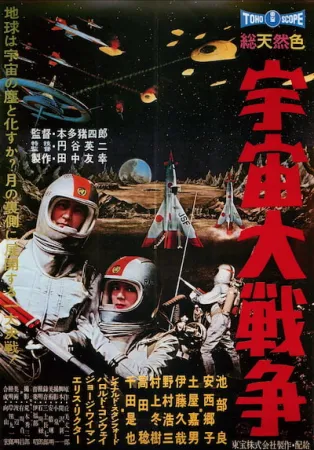


































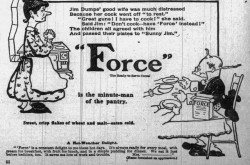
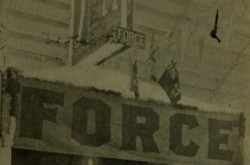
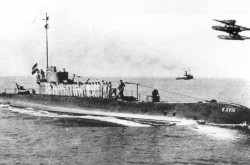
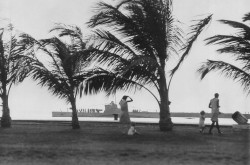
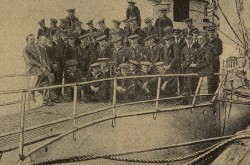
![A block of photographs showing some of the people involved in the bombing of beluga whales in the estuary and gulf of the St. Lawrence River. Anon., “La chasse aux marsouins [sic]. » Le Devoir, 15 August 1929, 6.](/sites/default/files/styles/thumbnail_7/public/2024-09/Le%20Devoir%2015%20aout%201929%20page%206.jpg?h=584f1d27&itok=TppdLItg)
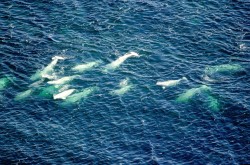
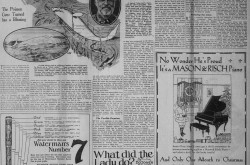

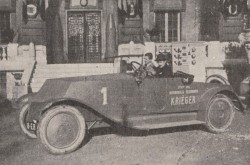
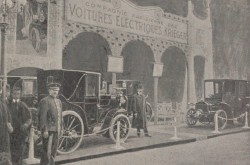
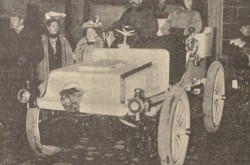
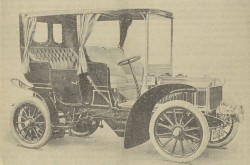

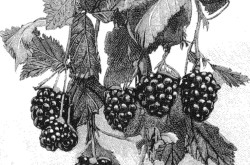
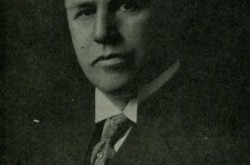
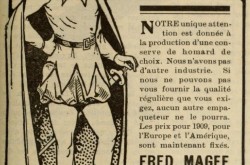
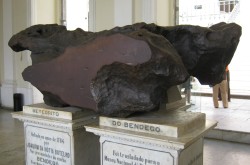
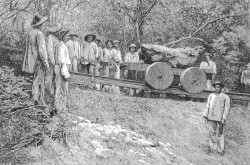
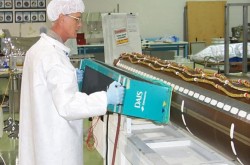

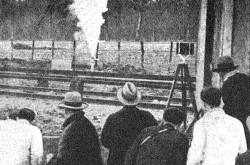
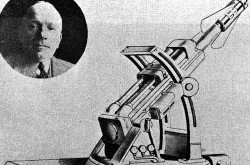
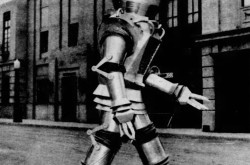

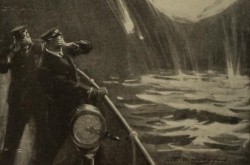
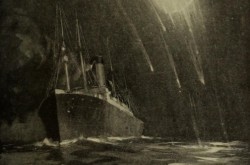
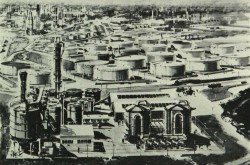

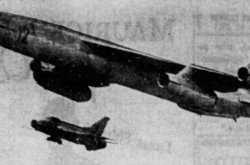
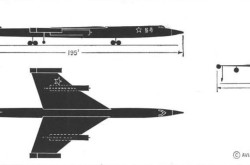
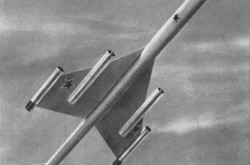
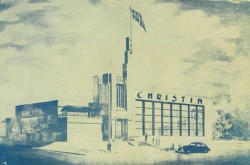
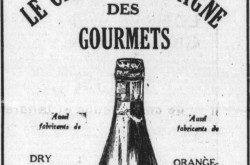
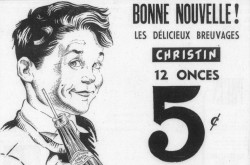
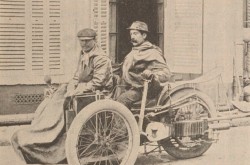
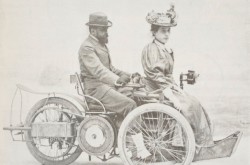
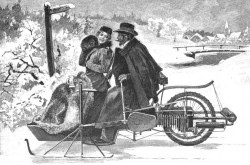
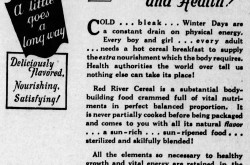

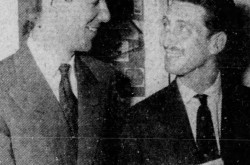
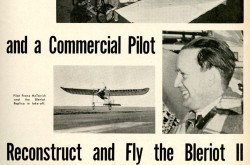
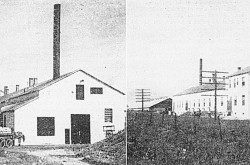
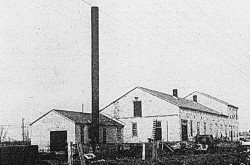



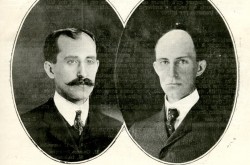

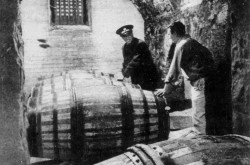
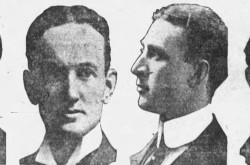
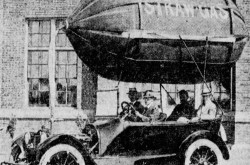
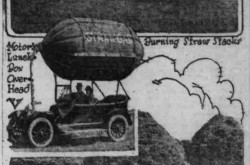
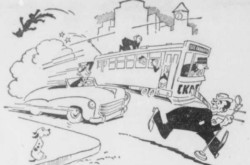

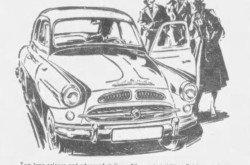
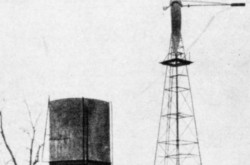
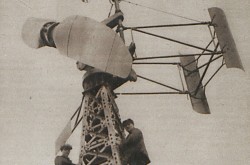
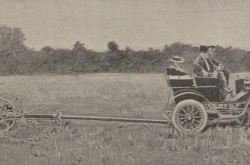

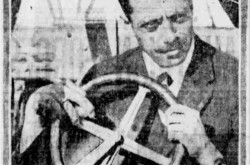
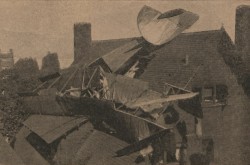
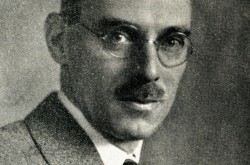
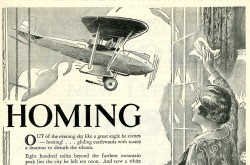
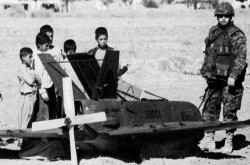
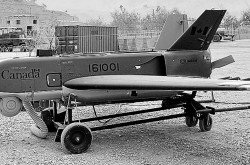
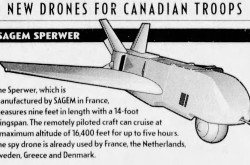
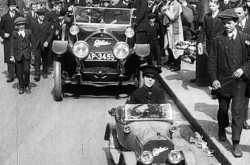
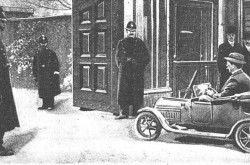
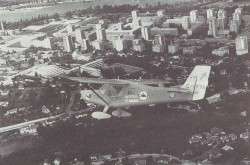
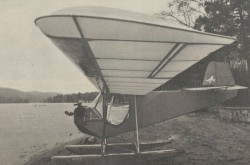

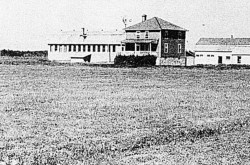
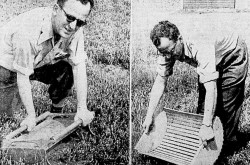
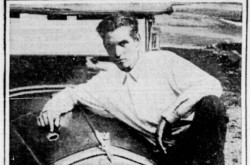
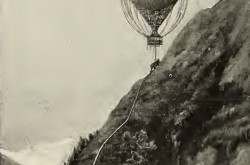
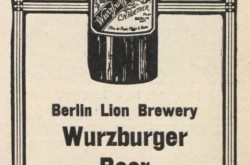

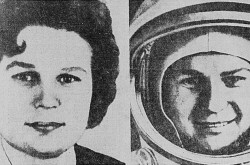
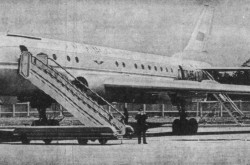
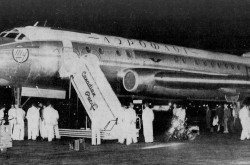
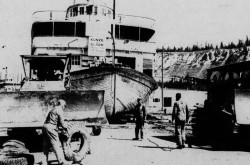
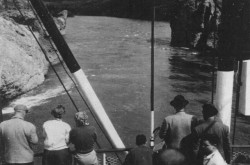
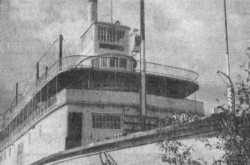
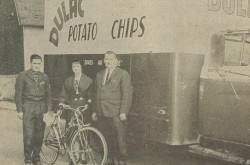
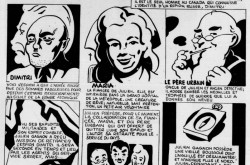
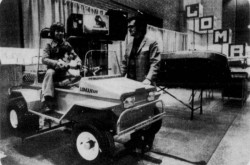
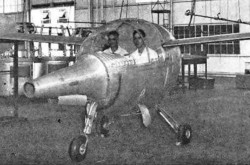
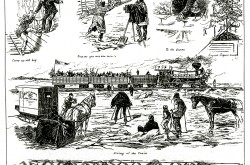
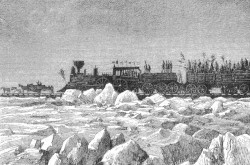
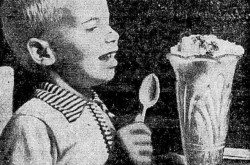
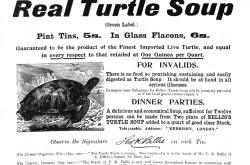
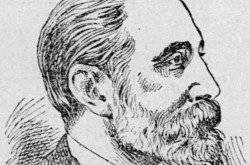
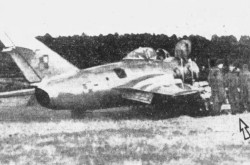
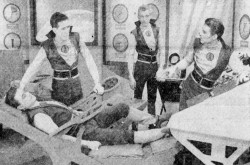
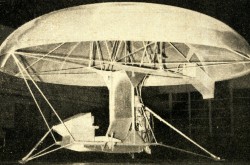
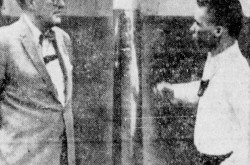
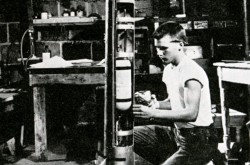
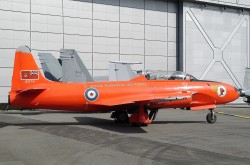
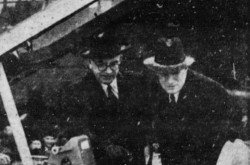
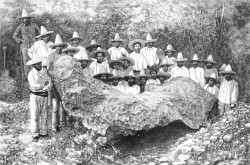
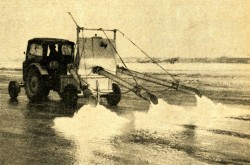
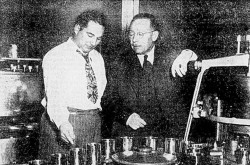
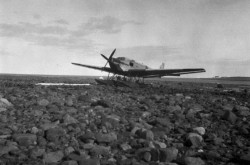
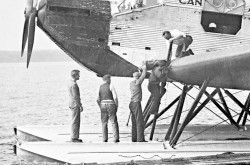
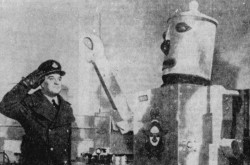
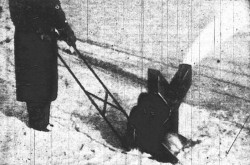
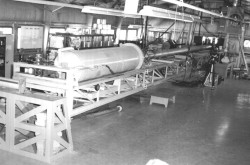
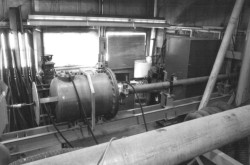
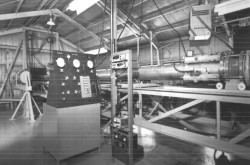
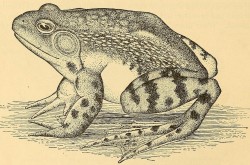
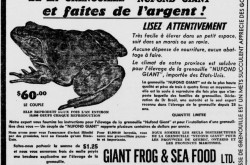
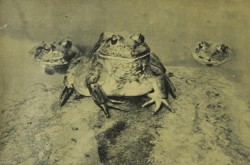
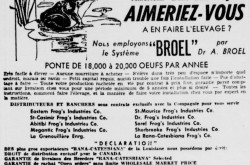
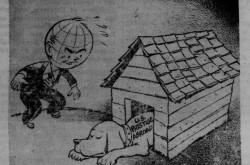
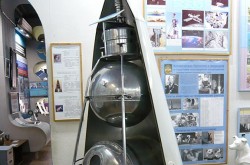
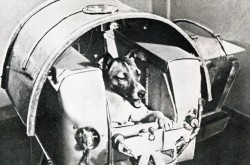
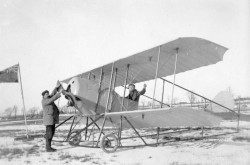
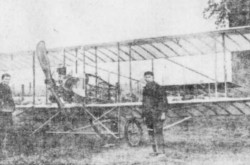
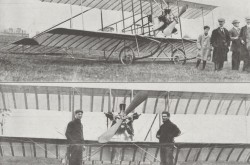
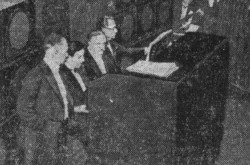
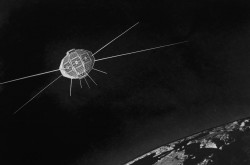
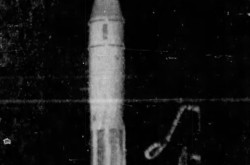
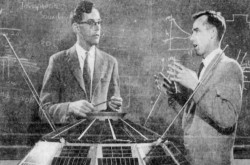
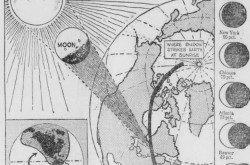



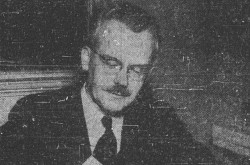
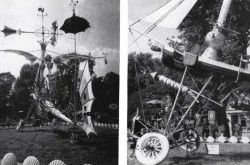

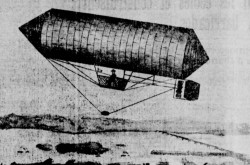
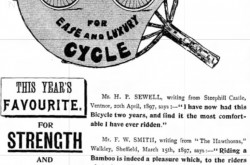
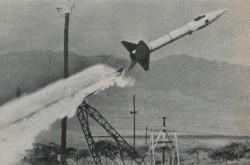
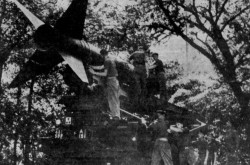
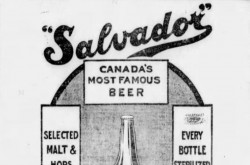

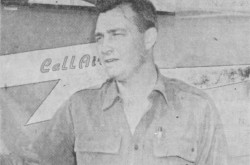
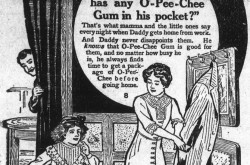
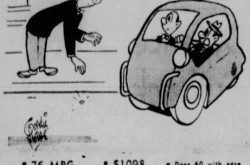
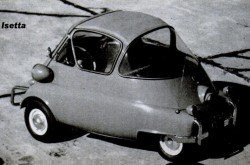
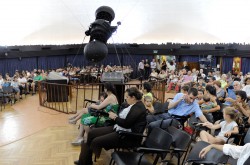
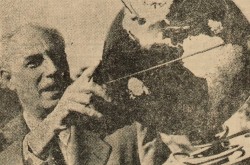
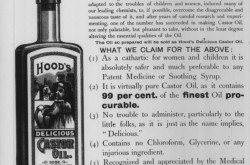
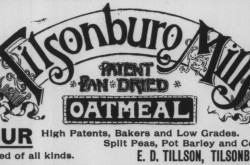
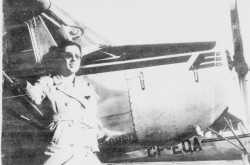
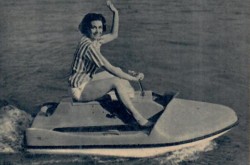

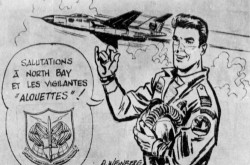
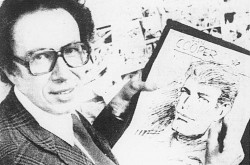
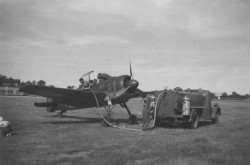

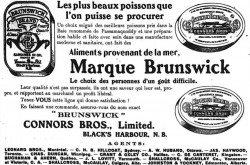


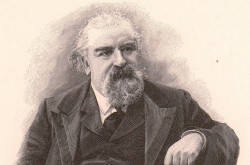
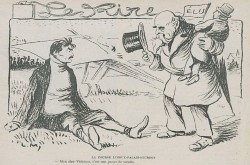
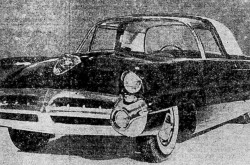
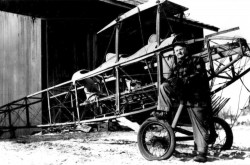

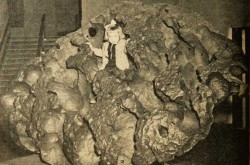
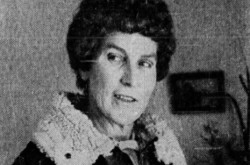
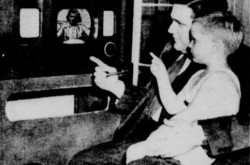
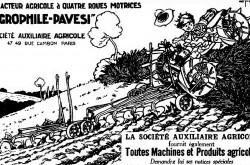
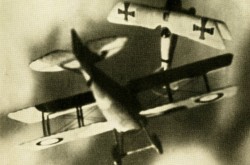
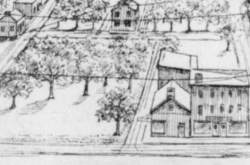
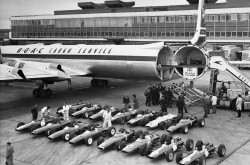
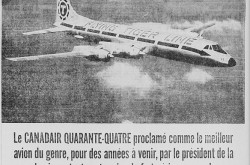
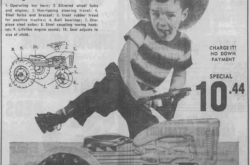
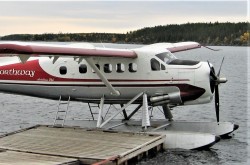
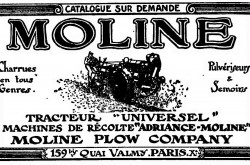
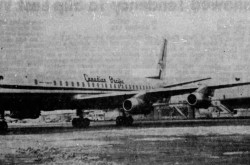
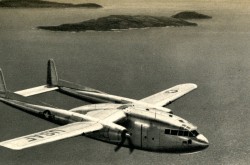
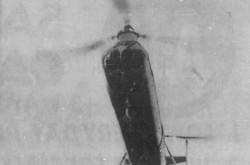

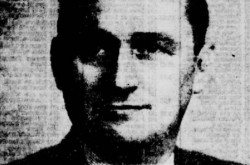
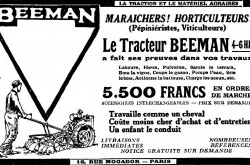
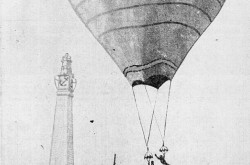

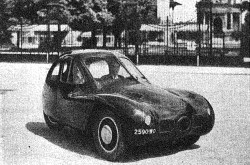
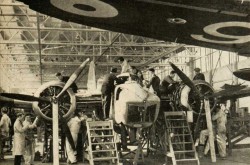
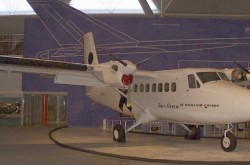
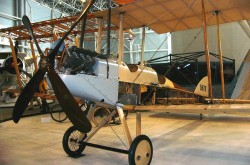
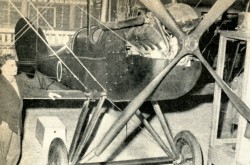

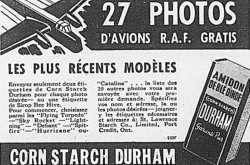

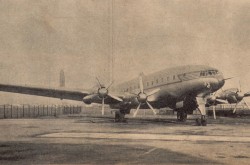
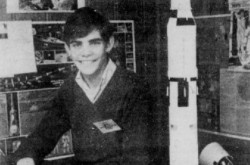
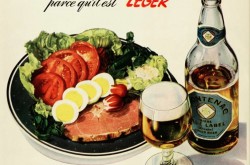
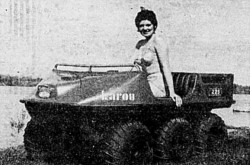
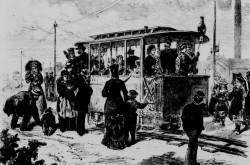
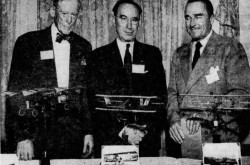

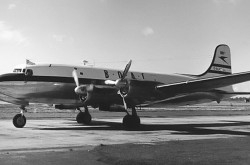
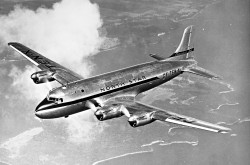
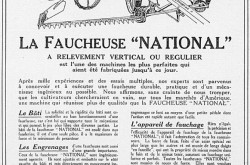
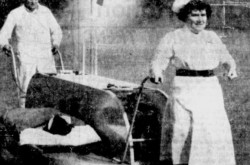
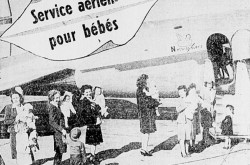
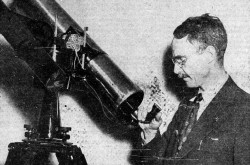
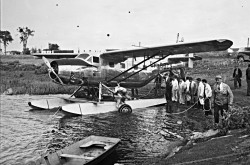
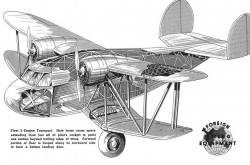
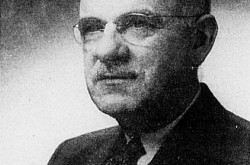
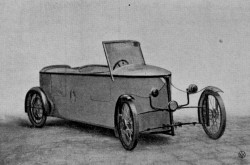
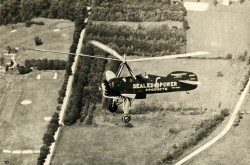
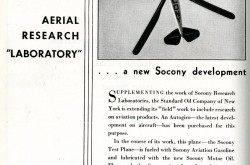
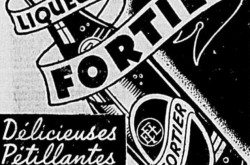
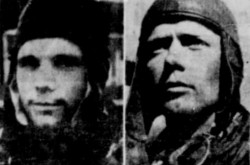
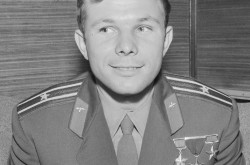
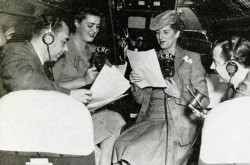
![Peter Müller at the controls [sic] of the Pedroplan, Berlin, Germany, March 1931. Anon., “Cologne contre Marseille – Le mystère du ‘Pédroplan.’ [sic]” Les Ailes, 2 April 1931, 14.](/sites/default/files/styles/thumbnail_7/public/2021-04/Les%20Ailes%202%20avril%201931%20version%20big.jpg?h=eafd0ed4&itok=WnBZ5gMf)
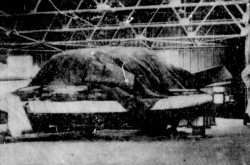
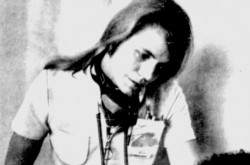
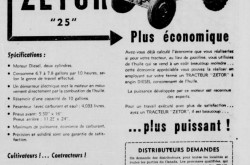
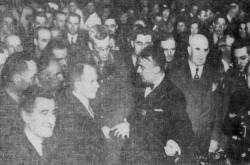
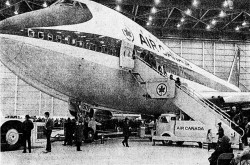
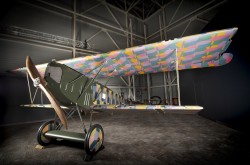
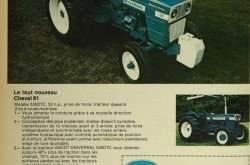
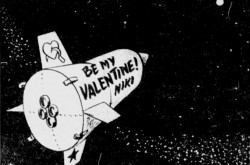
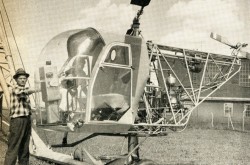

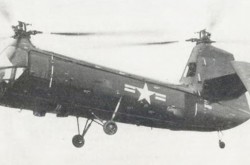
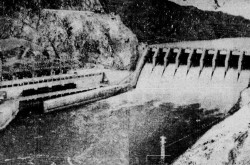
![One of the first de Havilland Canada Chipmunk imported to the United Kingdom. Anon., “De Havilland [Canada] DHC-1 ‘Chipmunk.’” Aviation Magazine, 1 January 1951, cover.](/sites/default/files/styles/thumbnail_7/public/2021-01/Aviation%20magazine%201er%20janvier%201951%20version%202.jpg?h=2f876e0f&itok=DM4JHe5C)
